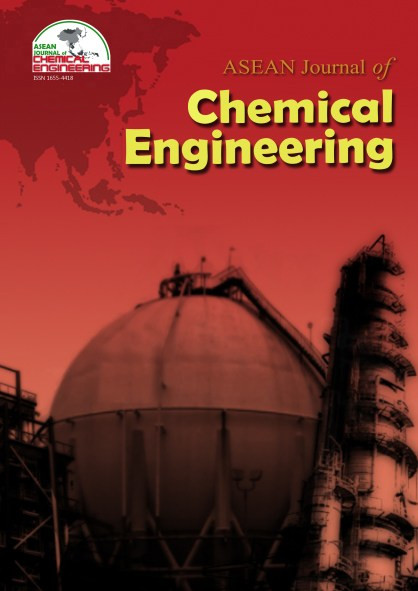Research on Biological Activity of some Extracts from Vietnamese Carica papaya Leaves
Abstract
Carica papaya leaves have long been used in some folk remedies to treat cancer. This folk remedy originated from Queensland - Australia from 1978 (Harald W. Tietze, 1997). In Vietnam, there are some successful cases of using Carica papaya leaves for cancer treatment even though this mediation do not always work out. In this study, the soluble substances in water (aqueous extract), the carotenoid and the polar substances (polar extract) were extracted from Carica papaya leaves grown in Vietnam; the bioassays such as cytotoxicity on some tumor cell lines as well as antioxidant activity were also tested with obtained extracts. The results showed that all obtained extracts had antioxidant activity stronger than the control substance - vitamin C at the same tested concentration. At concentration of 100 μg/ml, the inhibitive activity on lung cancer cell line LU-1 of obtained extracts was highest, from 43.47% (aqueous extract) to 62.88% (polar extract). On carcinoma cell line KB, inhibitive ability of extracts was lower: 2.8% (polar extract) and 20.6% (aqueous extract). On the breast cancer cells MCF7, inhibitive ability of above extracts was quite high, from 33.95% to 56.19%. On the leukemia cell line HL 60, inhibitive ability of these extracts was also high, from 39.56 to 60.64%. In addition, the result pointed out that on stem cells isolated from mouse embryos (ESC), the obtained extracts was not toxic to healthy cells of this line. This suggested that extracts from Carica papaya leaves has the potential to become one of the natural substance products that can support cancer treatment in certain cases.
References
2. A. Monks, D. Scudiero et al., (1991). Feasibility of a high-flux anticancer drug screen using a diverse panel of cultured human tumor cell lines. J. National Cancer Institute 83 (11): 757-766.
3. A.U. Ogan (1971). The basic constituents of the leaves of Carica papaya. Phytochemistry 10 (10): 2544-2547.
4. David Grassi, Giovambattista Desideri, Claudio Ferri (2010). Flavonoids: Antioxidants Against Atherosclerosis. Available from: www.mdpi.com/journal/nutrients, 2010.
5. Deborah Mitchell (2010). Papaya leaf tea shows anticancer abilities. EmaxHealth –
Cancer treatment, 10 March 2010. Available from:
http://www.emaxhealth.com/1275/51/3 5982/papaya-leaf-tea-shows- anticancer-abilities.html
6. Harald W. Tietze. Papaya The Medicine Tree. Bermagui South-Harald W. Tietze Pub., 1997.
7. Hulda Clark. Papaya Leaf. The anti- cancer treatment. Cancer therapies page, 2010. Available from: http://www.huldaclarkzappers.com/?page_id=134
8. Noriko Otsuki, Nam H. Dang, Emi Kumagai, Akira Kondoc, Satoshi Iwataa, Chikao Morimotoa (2010). Aqueous extract of Carica papaya leaves exhibits anti-tumor activity and
immunomodulatory effects. Journal of Ethnopharmacology 127 (3): 760–767.
9. Ramiyati, Sismindari dan Ariyani (2006). Effect of protein fraction of Carica papaya L. leaves on the expressions of p53 and Bcl-2 in breast cancer cell line. Majalah Farmasi Indonesia 17 (4): 170 – 176.
10. R.C. Jagessar, A.Mars, G. Gomes (2008). Selective antimicrobial properties of
Phyllanthus acidus leaf extract against Candida albicans, Escherichia coli and
Staphylococcus aureus using stokes disc diffusion, well diffusion, streak plate and
a dilution method. Nature and Science 6(2), ISSN: 1545-0740.
11. R. H. Shoemaker, D. A. Scudiero et al., (2002): Application of high-throughput,
molecular – targeted screening to anticancer drug discovery. Curr. Top. Med. Chem. 2 (3): 229-246.
12. Srikanth G, S. Manohar Babu, CH. N. Kavitha, M.E.Bhanoji Rao, Vịaykumar.N,
CH.Pradeep (2010). Studies on in-vitro antioxidant activities of Carica papaya aqueous leaf extract. Research journal of pharmaceutical, biological and chemical science 1 (2): 59-65, ISSN: 0975-8585.
Copyright holder for articles is ASEAN Journal of Chemical Engineering. Articles published in ASEAN J. Chem. Eng. are distributed under a Creative Commons Attribution-NonCommercial 4.0 International (CC BY-NC 4.0) license.
Authors agree to transfer all copyright rights in and to the above work to the ASEAN Journal of Chemical Engineering Editorial Board so that the Editorial Board shall have the right to publish the work for non-profit use in any media or form. In return, authors retain: (1) all proprietary rights other than copyright; (2) re-use of all or part of the above paper in their other work; (3) right to reproduce or authorize others to reproduce the above paper for authors’ personal use or for company use if the source and the journal copyright notice is indicated, and if the reproduction is not made for the purpose of sale.



